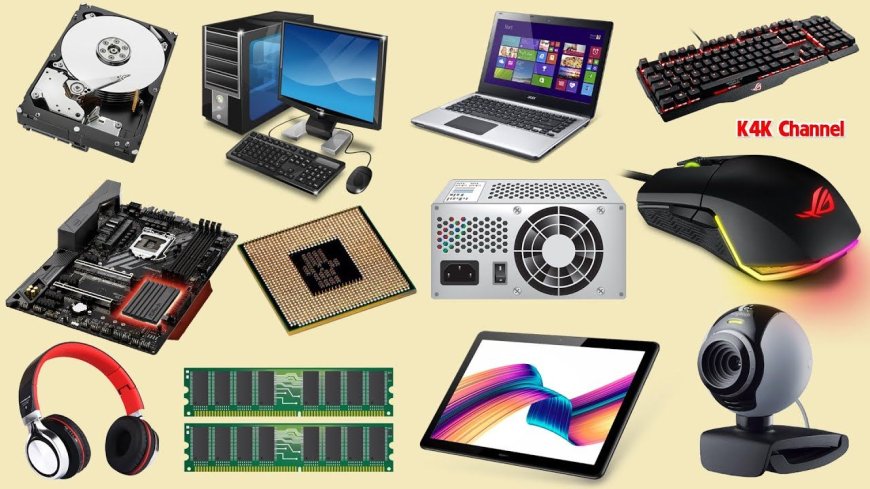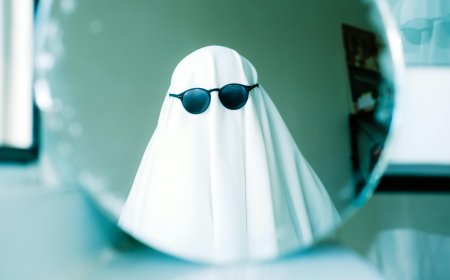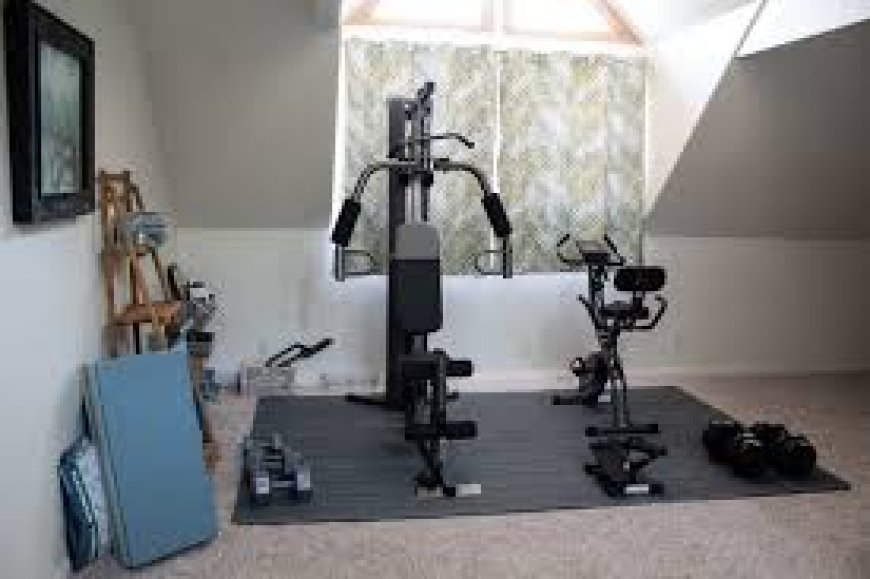Hardware Parts Of The Computer
The main hardware parts of a computer include the CPU (central processing unit) for processing data, RAM (random access memory) for temporary data storage, the motherboard to connect components, storage (HDD/SSD) for data storage, the GPU (graphics processing unit) for rendering images, and power supply for electricity.

What are the basic components of computers commonly referred to as the hardware?
The computer hardware is the inner part that makes it work. Key components include the CPU, motherboard, RAM, and storage. The storage could be a hard drive or an SSD. Also, there's the power supply and the peripherals: the keyboard, mouse, and check.
A computer's hardware is like the body and muscles. They make the physical world go round. It starts with the CPU, and the brain, and ends with the keyboard; your hands are on the controls. Interested in learning how each part works? Let’s break down the basics!
The hardware parts of a computer are the processor, the main circuit board, and the cache. The cache is temporary storage. You will also have the hard drive for storage and the input devices, like the keyboard and mouse.
Parts of computer hardware
-
CPU (Central Processing Unit) – The computer's processor. It is the heart of the system, handling all processing and decision-making.
-
Motherboard – The main circuit board connecting all components.
-
RAM (Random Access Memory) is temporary storage. It processes information for a short time.
-
Hard Drive/SSD (Solid State Drive) – To save data and files.
-
Power Supply Unit (PSU) –A computer's power source.
-
Graphics Processing Unit (GPU) – It renders the videos and images used in the production.
-
Keyboard – Input device for typing.
-
Mouse – An input device for navigating and clicking.
-
Monitor – Displays visual output.
-
Optical Drive – If so equipped, the player can read CDs/DVDs and record onto CDs/DVDs.
CPU
A CPU is the computer's "brain." It does most of the processing. It accepts instructions from various programs. It executes commands, runs apps, and controls data flow in a computer. In other words, the motherboard connects all the computer's parts. It does this through its circuits and a data path using different chips.
The ALU does calculations and other operations. The Control Unit runs the CPU and coordinates the other computer parts. CPUs also have registers. They are a tiny area. They hold a small amount of data and instructions, in parallel, during processing.
CPU clock speed is measured in gigahertz (GHz). It is the number of cycles per second the processor can perform. Higher values are better. Most processors today have more than one core, like a quad-core. This lets the CPU handle multiple tasks at once. Also, on the CPU level there are three levels of cache memory – L1, L2, and L3 – which stores the most actively used data for faster access by the processor.
Motherboard
The motherboard is a vital computer part. It connects and relays info between all other components. It transfers information within the computer. It also powers different sections. It connects the CPU, RAM, storage, and peripherals. A motherboard links all components. It ensures a computer runs smoothly.
Some of the major parts consist of the CPU socket where the processor is inserted and Ram slot where new memory modules can be fixed. The latest designs use Northbridge or Southbridge, or a single chip. They mediate between the CPU, memory, and peripherals.
Expansion slots, like PCIe, allow adding cards, like the graphics or sound card. Storage connectors, like SATA ports, connect to hard drives or SSDs. Power connectors supply power from the PSU to the motherboard and its parts.
These are mostly the ATX, micro ATX, and mini ITX form factors. They determine the size of the case and the components that can be mounted. Other subsets are the BIOS and UEFI. They are the "Basic Input/Output System" and "Unified Extensible Firmware Interface," respectively. They are controlled by boot hardware and provide access to different system options.
Integrated circuits: Some motherboards have built-in graphics, sound, and network features. So, they need a few expansion cards. A motherboard must have the right CPU socket, the correct RAM type, and enough expansion slots.
RAM
RAM or known physically as the main memory is one of the most important inputs in a computing machine.Here’s some detailed information about RAM:
-
Function: RAM is forms of short-term memory that are utilized by the CPU in the storage and fast access of data that are in use or being processed. It lets the computer run apps at their best. It does this by providing a way to read and write data on a much faster storage medium than the hard drive or SSD.
-
Volatility:RAM is volatile in nature, it is cleared when the power is shut down. This is different however from non-volatile storage such as hard drives or SSD where data is stored even when the computer is switched off.
-
Types of RAM:
-
DDR (Double Data Rate):Some of the known kinds of DDR memory include the DDR3, the DDR4 and the most recent one, The DDR5.
-
SRAM (Static RAM): This type of memory can access data in two clocks. It was popular for caches. It is more expensive than DRAM.
-
DRAM (Dynamic RAM): This is the most used type of RAM in computers. It needs periodic refreshing to retain its data.
-
Capacity: Given in gigabytes (GB), RAM defines the amount of data that can be processed simultaneously at the operational speed. More RAM lets a computer run more apps at once. It also helps with memory-intensive tasks. These are real-life examples of its benefits.
-
Speed: The RAM speed is in the form of MHZ(megahertz) or GHz(gigahertz) and determines how swift data can be retrieved from the RAM or written to it. Performance generally improves with higher speeds.
-
Channels: The memory may connect to the motherboard in different channels, like two or four. This can increase bandwidth and improve memory performance.
-
Form Factor: RAM types include DIMM that is used in desktops and SO-DIMM that is used in laptops among others. When choosing the cooling solution the form factor should also correspond to the motherboard.
-
Latency: It's the delay after a data transfer instruction. Lower latency means faster performance.
-
In general, RAM can be considered as a crucial factor that defines the fast running speed and capacity of a computer for multitasking. The more the RAM, the more the system is able to juggle several applications and big files at the same time..
Hard drive
The hard drive also known as hard disk drive-HDD is one of the important elements in a computer required in storage. Here’s a detailed overview:
-
Function: The hard drive is the computer's 'memory'. It holds your documents, apps, OS, music, and photos or videos. It offers long-term storage known as nonvolatile that is stored even when the computer is switched off.
-
Components:
-
Platters: Discs coated with magnetic material where data is stored. They spin at high speeds.
-
Read/Write Heads:Reading or writing data on the platters, these heads are installed above the platters.
-
Spindle: Drives that cause the rotation of the platters.
-
Actuator Arm: In an actuator arm, the read and write heads move along the platters.
-
Storage Capacity: The storage capacity is stated in GB or TB, and it indicates how much data the drive holds in it.
-
Speed: Hard drives are classified by the number of rotations per minute (RPM for short). These are usual rotational speeds and the higher the RPMs are, the quicker data is accessed out of drive; or they are 5400 and 7200 RPM.
-
Form Factor: Hard drives come in various sizes. Of these, 3 are the most common. 5 inch for desktop computer and 2 inches for laptop. 5 inches for laptops. External hard drives may use different sizes and connectors.
-
Interface: Basically, the interface helps in linking the hard drive to the computer. SATA, or Serial ATA, are the most popular drive interfaces. IDE, or Integrated Drive Electronics, is an older interface. SAS (Serial Attached SCSI) is utilized on the high I/O, or enterprise level applications.
-
Reliability and Durability: Hard drives are mechanical devices. They have many moving parts. So, they are less resistant to physical shocks than SSDs. Their usage and handling should be done in a correct way so that they can be of service for many years.
-
Comparison to SSDs: Unlike traditional hard drives, SSDs use flash memory. They have no moving parts. They are faster, more durable and more energy efficient but their cost per gigabyte may be high.
-
Hard drives store data permanently. Solid state drives are replacing them. They are faster and more reliable in today's high-tech world.
Power supply unit
In computer systems, there is a unit known as a power supply unit or PSU, which has great importance. These circuits convert power from a source to low voltage DC. This is the power needed by the computer's internal components. Here’s an overview of the PSU: Here’s an overview of the PSU:
To understand one component and its main tasks, we will look at the Power Supply Unit (PSU). It is vital to a PC. It supplies multiple DC voltages to various hardware parts. These include the motherboard, CPU, and storage system. This ensures all parts get a steady, reliable power supply. So, the whole PSU system is stable.
The PSU has three main parts. A transformer lowers the AC voltage. Rectifiers convert the AC to DC. Filters stabilize the DC voltage and prevent fluctuations. Also, a cooling fan is included. It cools the PSU. This is to dissipate heat from power conversion.
The wattage rating, in watts (W), shows the max power a PSU can provide. So, choose a PSU with enough wattage for your current and future components.
Graphics processing unit
A graphics processing unit is the kind of processor used almost solely for image realization, videos, and animations. Here's a brief overview of the GPU:
|
Category |
Details |
|
Function |
Offloads and accelerates visual data processing from the CPU; responsible for rendering graphics and calculating images/textures displayed on screen |
|
Components |
|
|
- Shader Units |
Cores that perform computations related to graphics processing, such as shading and lighting effects |
|
-VRAM(Video RAM) |
Dedicated memory used to store textures, frame buffers, and other graphics data for quick access by the GPU |
|
- Cooling System |
Includes fans or heat sinks to manage heat generated during intensive processing tasks |
|
- Architecture |
Parallel architecture allows handling many tasks simultaneously, improving efficiency for rendering and simulations |
|
Performance Metrics |
|
|
- Clock Speed |
Measured in MHz or GHz, representing how fast the GPU can process data |
|
-CUDA Cores / Stream Processors |
The number of cores that handle multiple tasks; more cores generally mean better performance |
|
-Memory Bandwidth |
The speed at which the GPU reads and writes data to VRAM |
|
Uses |
|
|
- Gaming |
Provides detailed graphics and smooth gameplay for modern video games |
|
-Content Creation |
Accelerates video editing, 3D rendering, and graphic design tasks |
|
-Machine Learning |
Handles parallel computations efficiently, making it suitable for AI and machine learning tasks |
|
Integrated Vs. Dedicated GPUs |
|
|
- Integrated GPU |
Built into the CPU or motherboard, shares system memory, suitable for basic tasks and light gaming |
|
- Dedicated GPU |
Separate card installed in the motherboard with its own VRAM, suitable for high-end gaming and professional graphics work |
|
Overall Role |
Delivers high-quality visual experiences and performs complex computations beyond the CPU's capabilities |
Keyboard
The keyboard is an input device. It is easy to access. It helps enter text and commands into the computer. Here are its key features and functions:
-
Key Layout:
-
QWERTY: The most popular English keyboard. It's officially called the '6-pack' since the first six keys in the first row.
-
Other Layouts: Some layouts are also in other languages and locations. For example, the AZERTY layout is used in French, and the QWERTZ layout is used in German.
-
Keys:
-
Keys: Use of alphabetic letters (A-Z) and numerical numbers (0-9) are also incorporated into it.
-
Function Keys:Residing at the top F1 to F12 and it is for certain functions or commands.
-
Modifier Keys:Residing at the top F1 to F12 and it is for certain functions or commands.
-
Navigation Keys: The Navigation keys or the keyboard arrow keys, Home, End, Pg-Up, and, Pg-Down keys for navigating documents as well as screens..
-
Enter Key: Used to execute commands or create new lines in text.
-
Spacebar: Adds spaces between words and characters.
-
Types:
-
Mechanical Keyboards: They have switches under the keys. They give a tactile feel and last longer.
-
Membrane Keyboards: They use a rubber dome or membrane layer under the keys. This makes them softer, giving a faint sound when the keys are tapped.
-
Wireless Keyboards: They use a rubber dome or a membrane layer beneath the keys. This softer layer dampens the sounds when the keys are tapped.
-
Ergonomic Keyboards: They are designed to reduce strain on the fingers and wrists. They promote a more ergonomic typing position.
-
Special Features:
-
Backlighting:A kind of lights up for the most significant characters while typing in the dark.
-
Programmable Keys: Set specific functions for different apps or tasks.
-
Built-in Trackpad/Mouse: Some keyboards have integrated pointing devices for convenience.
-
Connection Types:
-
USB: Common connection method for modern keyboards.
-
Bluetooth: Allows for wireless connectivity.
-
PS/2: Older connection type, now less common.
-
The keypad is used to type and control a computer and selection of suitable type will improve the comfort and efficiency of use.
Mouse
The mouse is a core input device which enables the user to interface with a computer. Here’s an overview of its key features and functions:
-
Function: The mouse allows the user to point and click on information on a computer screen and scroll through the pages. It converts the physical movements of a person onto the movement of the cursor on the screen, so that they can manipulate graphic icons.
-
Components:
-
Buttons:In case of a typical mouse, it is equipped with two buttons each located on the left side of the device. Left button Selects and executes Commands: Right button Selects and opens Context Menus.
-
Scroll Wheel: As placed between the buttons, the scroll wheel helps the users scroll through the documents or Web pages with ease.
-
Sensor: The movement of modern mice is recognised by optical or laser sensors. Optical mice utilize red LED light while laser mice use laser engines for tracking purposes.
-
Types:
-
Wired Mouse: It has a cable connection through which you can connect it to the computer, thus does not require batteries to keep on charging all the time..
-
Wireless Mouse:This utilizes Bluetooth or a wireless receiver hence adding more mobility and less mess of cables.
-
Ergonomic: Mouse. It is an ergonomic solution. It will increase comfort during long use.
-
DPI (Dots Per Inch):Measures the mouse’s sensitivity. In detail, a higher DPI means the cursor will move further across the mouse surface to register a command. So, it requires less hand movement.
-
Additional Features:
-
Extra Buttons: Some portable, easy-to-carry mice have extra programs. Buttons on the mice give quick access to preferred features and shortcuts.
-
Adjustable Sensitivity:Enables maneuvering between high and low DPI levels, at the same time.
-
Connectivity:
-
USB:Many wired mice use USB connection to link to the computer they are used on.
-
Bluetooth: The wireless mouse can operate through Bluetooth and it can be useful for laptop and tablets for instance.
-
A mouse is mainly used to control and interact with a computer and is thus one of the most popular input devices that exist in computing.
Monitor
A monitor is a computer component. It creates and displays visual output, like programs, videos, and images. Monitors include three types: LCD, LED, and OLED. Each type has different color precision, brightness, and contrast.
The number of pixels in a monitor defines its clarity and the standard resolutions include Full HD or 1080p, Quad HD or 1440p, 4K. Today, there are monitors of various sizes, measured diagonally in inches. The smallest ones are about 20 inches. The largest are over 30 inches.
Usually, an optical drive is connected to a computer using SATA or USB ports it incorporates. They are utilized in a number of ways and they include setting up applications, in playing multimedia, and in creation of a copy. However, optical drives are less common in modern computers. This is due to the rise of the internet, digital downloads, and streaming services.
FAQ’s
What are 5 computer hardware?
Computer chips such as the Central Processing Unit (CPU), Main Board, Random Access Memory (RAM), Hard disc and Graphics card.
What are 10 computer hardware?
CPU, main board, RAM, hard disk, video card, power supply, CD/DVD drive, cooling system, keyboard, and mouse.
What is computer hardware?
Computer hardware is the physical part of a computer. It includes the processor, platform, and data storage system. These make up a computer system.
What is the hardware short answer?
Hardware refers to the physical components of a computer which you can easily point at and say that’s part of the hardware.
What is hardware with an example?
Hardware means the physical parts, like the CPU. A graphics card is hardware used for rendering images.
Conclusion
Computer hardware means the physical parts of a computer. They make the whole system work. Hardware components are: a CPU, the main control; a motherboard, which connects all parts; RAM, for short-term data; and a hard drive or SSD, for long-term storage.
Others are the power supply unit (PSU), the graphics card (GPU), and the input/output devices, like the keyboard, mouse, and monitor. Every part is crucial in the functioning and functioning of your computer as you are well aware of.
What's Your Reaction?





































